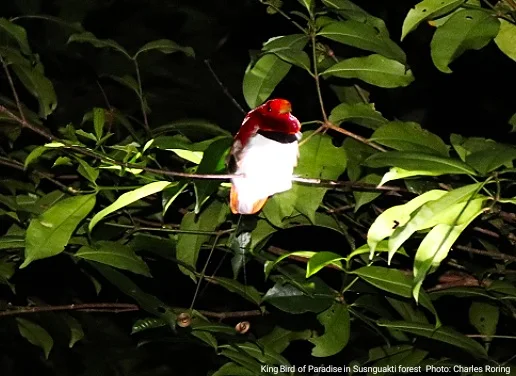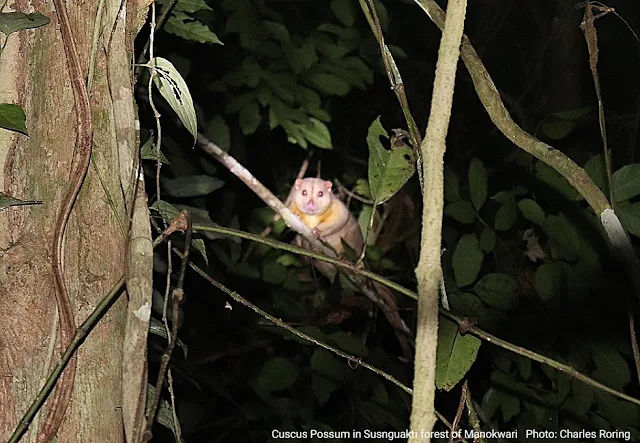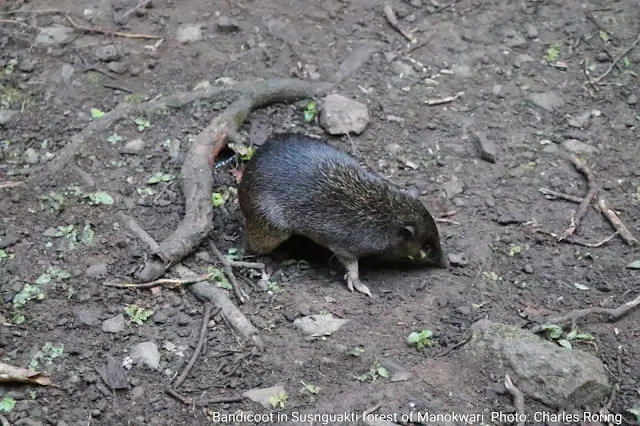I have just returned from the forest today. I guided 3 tourists on hiking, camping, bird and wildlife watching tour for 4 days/ 3 nights. They were Jeff and Charlotte from France, Toshiki Matsui from Japan. I guided them to watch Lesser Birds of Paradise (Paradisaea minor), King Bird of Paradise (Cicinnurus regius), Magnificent Riflebird (Ptiloris magnificus), and Common Paradise Kingfisher (Tanysiptera galatea).
 |
| King Bird of Paradise as seen in Susnguakti forest during night walk tour |
 |
| Cuscus Possum |
Birds of Paradise are active in the mornings and in the evenings. When we were waiting for a Magnificent Riflebird landing on its dancing site (which is a branch of a tree), we heard the sounds of Hooded Pitta walking among the bush. I immediately played its recorded sounds to attract him. He heard the calls and walked towards the place where I was sitting. I was holding camera and cell phone (which was my sound player). My camera was inside my bag and I was not ready to take pictures of the birds. Next time, I will be ready with my camera when I call him.
Cuscus possum was one of the most important attractions of Susnguakti forest. Local villager accompanied us during night walks to call cuscus. Yes, the male cuscus was called by immitating the sounds of female ones. We also saw bandicoot that looked like a big rat. Actually bandicoot was a marsupial animal.
 |
| Bandicoot in Susnguakti forest |
The primary forest where we stayed was a very rich of tropical vegetation. There bamboo, glowing mushroom, giant ficus tree, orchid, and beautiful staghorn fern epiphytes.
The basecamp where we stayed were simple and very basic. I brought dome tents, provided mattrasses, pillows, and spotting scope as well as cooking and eating utensils. We used a small river as our bathing tub and toilet.
Tourists who are interested in taking this jungle tour have to be fit physically because they need to go hiking up steep slopes of Susnguakti forest for around 1 hour to reach the base camp.
After completing the tour, I arranged a public transport vehicle that brought the Japanese tourist to Swissbel hotel and the French couple to Oriestom hotel in Manokwari city.
Booking
Please, contact me: Charles Roring
by whatsapp: +6281332245180 or
by email: peace4wp@gmail.com
For more information about this bird and wildlife watching site, you could click this link: Susnguakti Forest